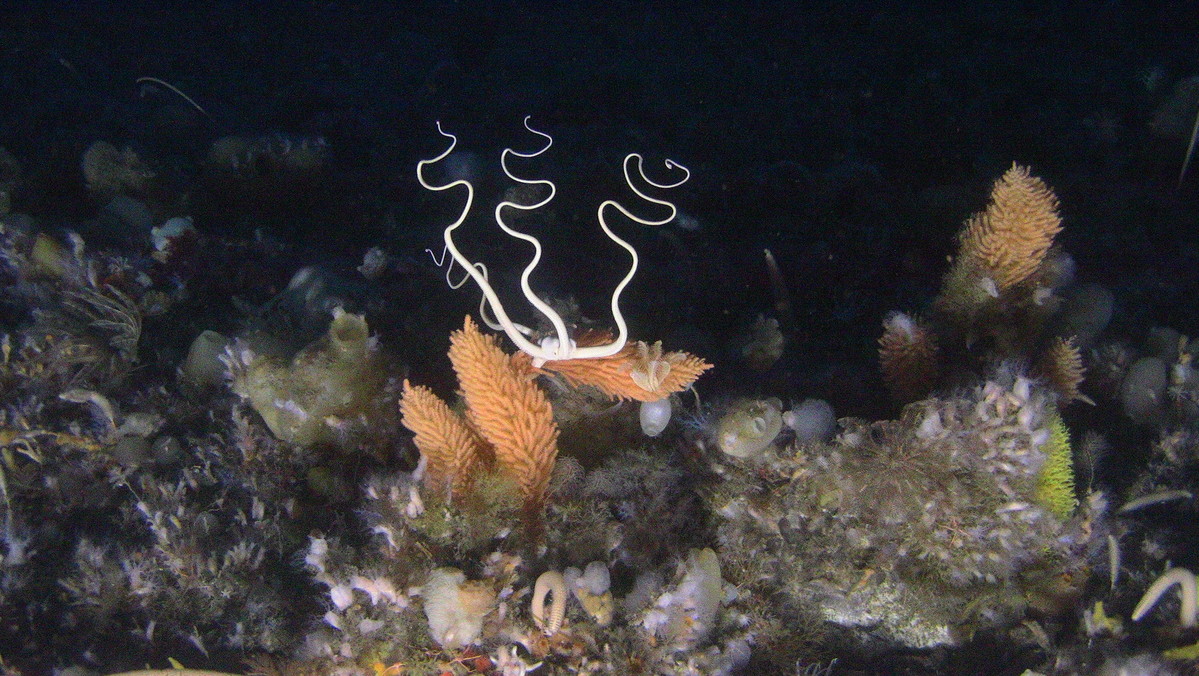
Underwater Antarctic submarine image.
London, UK – Research submarine dives to the Antarctic seafloor, carried out during a Greenpeace expedition to the Antarctic in January, have identified four separate Vulnerable Marine Ecosystems (VMEs) which have been approved by a group of international Antarctic scientists for special local protection.
The research was led by Dr. Susanne Lockhart, of the California Academy of Sciences, who ventured to the Antarctic seafloor in a submersible to document rare and vulnerable species while on board the Greenpeace ship Arctic Sunrise. Greenpeace is campaigning for a network of protected areas in the Antarctic, including a vast 1.8 million square kilometre Antarctic Ocean Sanctuary, which would be the largest protected area on Earth.
“I’m extremely pleased and excited about getting these areas protected. The video evidence collected during this expedition is full of rare and little-known organisms. In the months I’ve spent studying the footage, I’ve been sent down countless research click-holes, just like Alice in Wonderland. The seabed around Antarctica truly is a wonderland of biodiversity that is at serious risk from the combined effects of overfishing and climate change. We need to protect this wondrous place before we lose what we don’t even know we have. That these four sites can now be used to provide scientific backing for strong protections within the sanctuary planned for this region gives me great satisfaction,” said Dr. Susanne Lockhart.
“It’s a privilege for Greenpeace to engage in this kind of crucial scientific work. It was amazing to see the diversity and abundance of life in these colourful, alien, seafloor landscapes and I’m thrilled that because of our expedition they will now be protected. We know so little about these remote waters that there is a precautionary imperative to protect them before we damage or destroy ecosystems we haven’t even had a chance to study yet. Our findings add to the growing body of evidence for why we need a network of ocean sanctuaries in the Antarctic,” said John Hocevar, a Greenpeace marine biologist who piloted the submarine and co-authored the report with Dr. Lockhart.
Analysis of the footage of these little-seen Antarctic seafloor ecosystems was proposed as evidence of sites in need of protection by Dr. Lockhart, who is responsible for 75% of all research-based identification of VMEs in Antarctic waters. The sites are located in the Antarctic Sound and the Gerlache Strait along the Antarctic Peninsula.
The evidence was submitted to a working group of scientists at the Commission for the Conservation of Antarctic Marine Living Resources (CCAMLR) in Cambridge last week, who will recommend them for formal registration when CCAMLR next convenes in October, in Hobart, Tasmania. The immediate protection of the ecosystems will be established following this meeting, protecting an area of one nautical mile radius around each of the sites.
Last week, Dr. Lockhart spoke at Greenpeace UK’s Antarctic 360° event about her research and the need for protection of the Antarctic Ocean, alongside Oscar-winning actor Javier Bardem, who also journeyed to the seafloor during the expedition.
Javier Bardem, actor and Greenpeace Antarctic Ambassador, said:
“I am lucky enough to have witnessed the breathtaking wildlife and landscapes of the Antarctic. Humanity’s footprint weighs heavy on so much of our shared planet, but this year we have an opportunity to create a vast Antarctic Ocean Sanctuary and protect this stunning wilderness for generations to come. I stand with 1.7 million people in calling on governments to protect the Antarctic.”
ENDS
For photo and video from the submersible dives, including footage of both Dr. Lockhart and Javier Bardem, see here.
For a collection of specimens gathered during the Antarctic seafloor dives, see here.
Notes:
Greenpeace’s three-month expedition to the Antarctic, from January to March 2018, was conducting scientific research and raising awareness of a campaign to create a vast 1.8 million square kilometre Antarctic Ocean Sanctuary. The campaign is backed by over 1.7 million people globally. The final decision will be taken by the Antarctic Ocean Commission (CCAMLR) in October.
Dr. Susanne Lockhart is an Antarctic benthic specialist and research associate with the California Academy of Sciences.
John Hocevar is a marine biologist, submarine pilot and Oceans Campaigns Director at Greenpeace USA.
Contacts:
Luke Massey, Global Communications Lead, Protect the Antarctic campaign: [email protected], +44 (0) 7973 873 155
Greenpeace International Press Desk: [email protected], +31 (0) 20 718 2470 (available 24 hours)
